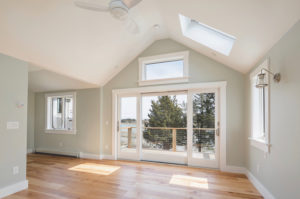The Question: I want to bring more light into my house without losing wall space. I’m thinking of installing skylights, but I have heard they can create more problems than they solve. What’s your advice?

Skylights aren’t a new idea. “Roof lanterns” have long been used to bring light and ventilation into dark spaces, from Renaissance cathedrals in Europe to cramped 19th-century stairwells in American cities. You would think we’d have had the engineering down by the time they became popular in the 1970s. But that generation of skylights often leaked or led to poor temperature regulation in the home.
The good news is that the technology has improved. Today’s skylights are both watertight and energy efficient. It’s not only that the glass is double or triple glazed. New flashing technologies and silicone sealants provide lasting weather protection on the outside. The new materials just don’t deteriorate and crack the way traditional caulks did.
When planning skylights, aim for south or west facing exposures, unless you’re an artist looking for northern light. Finishing interior touches like sunblock or blackout shades and retractable blinds make it possible to use skylights to keep your home cool in the summer and warm in the winter. Make sure to look into ventilation requirements — proper ventilation can make a big difference in performance.
If you’re looking for bells and whistles, there are “smart” skylights with automatic closing, automatic blinds, or self-tinting glass. Rain sensors in the skylight can detect moisture and close automatically. You’ll never have to ask, “Did I close the skylights?” in the middle of running errands.
You can go green with some innovations. Solar-powered versions are eligible for a 30-percent federal energy tax credit. They use a solar panel in the skylight that charges a battery that opens and closes the skylight. All with no need for wiring.
Another way to bring more light into your house is a tubular daylight device, or TDD. Solar tubes capture light on the roof through a small dome, transferring it down a reflective tube through a diffuser in the ceiling. Easy to install, they typically require only four to six inches of clearance and can be placed around plumbing, framing, and other obstructions. TDDs can provide extra light in hallways, closets, stairwells, bathrooms, and laundry rooms — areas that may not have access to a traditional window, much less a skylight.
The bottom line is that almost any home can benefit from more natural light. And improvements in skylights over the last few decades have been significant. I’m for them, for both beauty and utility.
This week’s Dovetail Joint question is answered by Tim Klink, founder of Coastal Custom Builders, a design-build firm in Eastham. Keep sending your questions and we’ll find more good answers.



